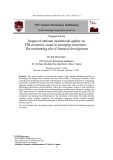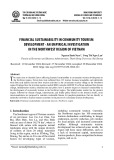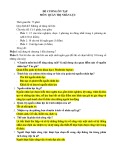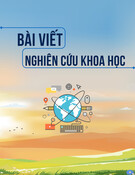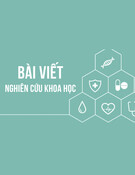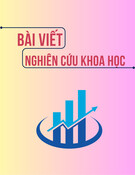Chapter 7
Sampling and Sampling Distributions
McGrawHill/Irwin
Copyright © 2014 by The McGrawHill Companies, Inc. All rights reserved.
Sampling and Sampling Distributions
7.1 7.2 7.3
7.4
Random Sampling The Sampling Distribution of the Sample Mean The Sampling Distribution of the Sample Proportion Stratified Random, Cluster, and Systematic Sampling (Optional)
7.5 More about Surveys and Errors in Survey
Sampling (Optional)
7.6 Deviation of the Mean and Variance of the
72
Sample Mean (Optional)
LO7-1: Explain the concept of random sampling and select a random sample.
7.1 Random Sampling
1.
2.
If we select n elements from a population in such a way that every set of n elements in the population has the same chance of being selected, the then elements we select are said to be a random sample In order to select a random sample of n elements from a population, we make n random selections from the population ◦ On each random selection, we give every
73
element remaining in the population for that selection the same chance of being chosen
LO7-1
With or Without Replacement
We can sample with or without replacement With replacement, we place the element chosen on any particular selection back into the population ◦We give this element a chance to be chosen on any
succeeding selection
Without replacement, we do not place the element
succeeding selection
It is best to sample without replacement
74
chosen on a particular selection back into the population ◦We do not give this element a chance to be chosen on any
LO7-2: Describe and use the sampling distribution of the sample mean.
7.2 Sampling Distribution of the Sample Mean
The sampling distribution of the sample mean is the probability distribution of the population of the sample means obtainable from all possible samples of size n from a population of size N
75
LO7-2
General Conclusions
If the population of individual items is
normal, then the population of all sample means is also normal
Even if the population of individual items is not normal, there are circumstances when the population of all sample means is normal (Central Limit Theorem)
76
LO7-3: Explain and use the Central Limit Theorem.
Central Limit Theorem
/(cid:0) n
=(cid:0)
=(cid:0)
Now consider a nonnormal population and (cid:0) Still have: (cid:0) ◦Exactly correct if infinite population ◦Approximately correct if population size N finite
But if population is nonnormal, what is the shape of the sampling distribution of the sample mean? ◦The sampling distribution is approximately
but much larger than sample size n
77
normal if the sample is large enough, even if the population is nonnormal (Central Limit Theorem)
LO7-3
The Central Limit Theorem Continued
No matter the probability distribution that
and standard
describes the population, if the sample size n is large enough, the population of all possible sample means is approximately =(cid:0) normal with mean (cid:0) /(cid:0) n deviation (cid:0)
=(cid:0)
Further, the larger the sample size n, the closer the sampling distribution of the sample mean is to being normal ◦In other words, the larger n, the better the
78
approximation
LO7-4: Describe and use the sampling distribution of the sample proportion.
7.3 Sampling Distribution of the Sample Proportion
The probability distribution of all possible sample
proportions is the sampling distribution of the sample proportion
If a random sample of size n is taken from a
population phat, then the sampling distribution of the sample proportion is ◦Approximately normal, if n is large ◦Has a mean that equals ρ
p
p
(cid:0) (cid:0) (cid:0)
◦Has standard deviation
pˆ
1 n
Where ρ is the population proportion and p ̂ is the sampled proportion
79
(cid:0) (cid:0)
LO7-5: Describe the basic ideas of stratified random, cluster, and systematic sampling (optional).
7.4 Stratified Random, Cluster, and Systematic Sampling (Optional)
Divide the population into nonoverlapping groups
Select a random sample from each stratum Combine the random samples to make full sample Appropriate when the population consists of two or
(strata) of similar units
variable of interest
◦Units within a group are similar to each other
Divide population into strata by age, gender, income
710
more different groups so that: ◦The groups differ from each other with respect to the
LO7-6: Describe basic types of survey questions, survey procedures, and sources of error.
7.5 More about Surveys and Errors in Survey Sampling (Optional)
Dichotomous questions ask for a yes/no
response
Multiple choice questions give the
respondent a list of of choices to select from Openended questions allow the respondent
to answer in their own words
711
7.6 Derivation of the Mean and the Variance of the Sample Mean (Optional) Given the following:
That is μx1 = μx2 = … = μxn = μ 1. The variance of xi, denoted σ2
xi, is σ2 the
1. The mean of xi, denoted μxi, is μ is the mean of the population from which xi will be randomly selected
That is σ2
x1 = σ2
x2 = … = σ2
xn = σ2
Sample mean is the average of the xi’s We can prove that μ = μ
712
variance of population from which xi will be randomly selected






